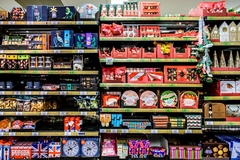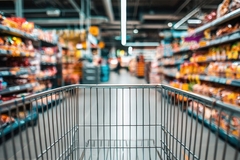
- Industry news
Industry news
- Category news
Category news
- Reports
- Key trends
- Multimedia
- Journal
- Events
- Suppliers
- Home
- Industry news
Industry news
- Category news
Category news
- Reports
- Key trends
- Multimedia
- Events
- Suppliers
Mixed bag for beers: AB InBev bounces back despite Bud Light boycott, Heineken’s price hikes lead to volume dip

04 Aug 2023 --- Beer giants AB InBev, Molson Coors and Heineken have all shown growing revenues in their financial results for the first half of the year. Nonetheless, challenges such as high input prices and a soft Asia Pacific beer market have made this first half of the year complex to maneuver.
Ab InBev managed to increase its revenue by 10% in the first half of the year. The company grew in Q2 (7.2%) despite a decline of 1.4% in volume sold “as growth in the majority of our markets was offset by performance in the US.”
Molson Coors capitalized on the weakness of AbInBev’s Bud Light. Its beers Coors Light and Miller Lite are now “50% bigger than Bud Light by total industry dollars. Last year, Bud Light was bigger than both,” says Gavin Hattersley, President and CEO of the business.

Meanwhile, Heineken grew its revenues by 6.3% for the half year. However, price hikes led to volume declines, especially in Europe. Beer volume sold saw reduced numbers in all regions, leading to 5.6% organic sales decline..
“In Europe, the region with the highest inflationary impact, volume declined in line with our expectations, yet demand in APAC was considerably softer than foreseen due to an economic slowdown and our own underperformance in Vietnam,” says Dolf van den Brink, chairman and CEO of Heineken.
Van den Brink announced that Heineken “prioritized” cost increases in the first half of the year, expecting pricing moves to moderate in the second half.
AB InBev: Growth amid the storm|
AB InBev, the largest beer company in the world, leveraged its international access and portfolio to offset the problems it faced in the US market caused after Bud Light lost its position as the top-selling beer in the US, following a sponsorship partnership with transgender influencer Dylan Mulvaney, which led to a boycott.
 AB InBev no-alcohol beer portfolio showed particular strength with 30% revenue growth in Q2.Its no-alcohol beer portfolio showed particular strength with 30% revenue growth in Q2, “performance was driven by Budweiser Zero in Brazil and growth of Corona Cero in Canada and Europe.” Consumers are embracing the low and no-alcohol category, with the low and no-alcohol category set to grow at 7% in the next few years.
AB InBev no-alcohol beer portfolio showed particular strength with 30% revenue growth in Q2.Its no-alcohol beer portfolio showed particular strength with 30% revenue growth in Q2, “performance was driven by Budweiser Zero in Brazil and growth of Corona Cero in Canada and Europe.” Consumers are embracing the low and no-alcohol category, with the low and no-alcohol category set to grow at 7% in the next few years.
The company’s core beers outperformed outside of their home markets (up 18.4%). Corona grew 23.7%, Budweiser 16.9% and Stella Artois 14.5%.
Nonetheless, the company will have to continue to face problems in the US, as in North America beer volumes declined 14.5% in the last quarter.
“Our total beer industry share declined this quarter but has been stable since the last week of April through the end of June. Since April, we actively engaged with over 170,000 consumers across the country through a third-party research firm and the data shows that most consumers surveyed are favorable toward the Bud Light brand and approximately 80% are favorable or neutral,” the company explains.
“As part of our long-term plan, we increased investments in our key brands, invested in measures to support our wholesalers and continued key initiatives such as partnerships with NFL, NBA, Folds of Honor and Farm Rescue.”
In other developments, the company invested in a biomass processor in Belgium to produce thermal energy from malt husk and installed new vacuum pump technology in several of its breweries across markets to reduce water usage in bottle fillers by around 50%.
Molson Coors step on the gas
Molson Coors achieved volume and revenue growth in double-digits for its Coors Light, Miller Lite and Coors Banquet. Overall sales increased by 11.8% in Q2. Heineken's volume sales volume declined in every market but particularly struggled in Asia Pacific (-13.2%).
Heineken's volume sales volume declined in every market but particularly struggled in Asia Pacific (-13.2%).
“While we remain mindful of the dynamic global macroeconomic environment and beer industry softness, our robust second quarter performance coupled with the strong foundation we have laid over the last three years, provide us the confidence to raise our 2023 annual guidance significantly,” says Tracey Joubert, chief financial officer at Molson Coors.
Heineken hurt by Asian sales drop
While Heineken grew its revenues by 6.3% for the first half of the year, its operating profit declined by 22.2% and net profit by 8.6%. Its sales volume declined in every market but particularly struggled in Asia Pacific (-13.2%), its most profitable region – due to economic slowdown in the area, noted van den Brink.
“The revenue growth and productivity improvements were more than offset by the significant inflationary pressures in our input and energy costs and the front-loaded incremental investments to grow the power of our brands, digitalization, capability and sustainability agendas,” the company explains.
Heineken predicts there is going to be lower pressure from inflation in the second half of 2023 on input costs, transport, energy and water. It also expects a better outlook in Vietnam and Nigeria, which had a “significant disruption in the first half.”
By Marc Cervera










